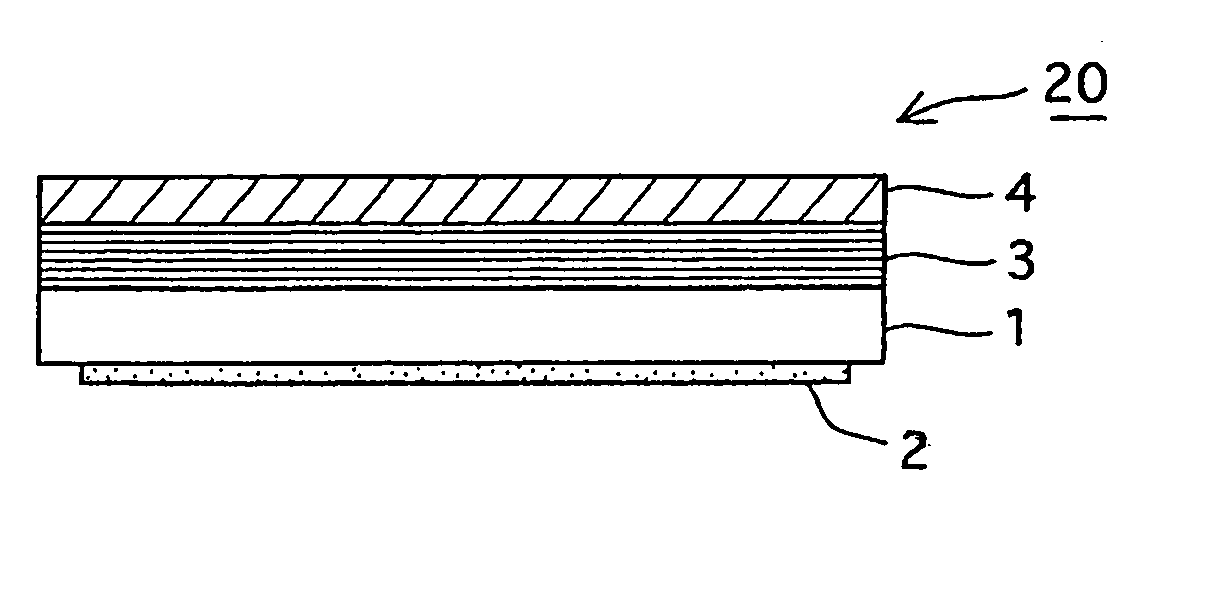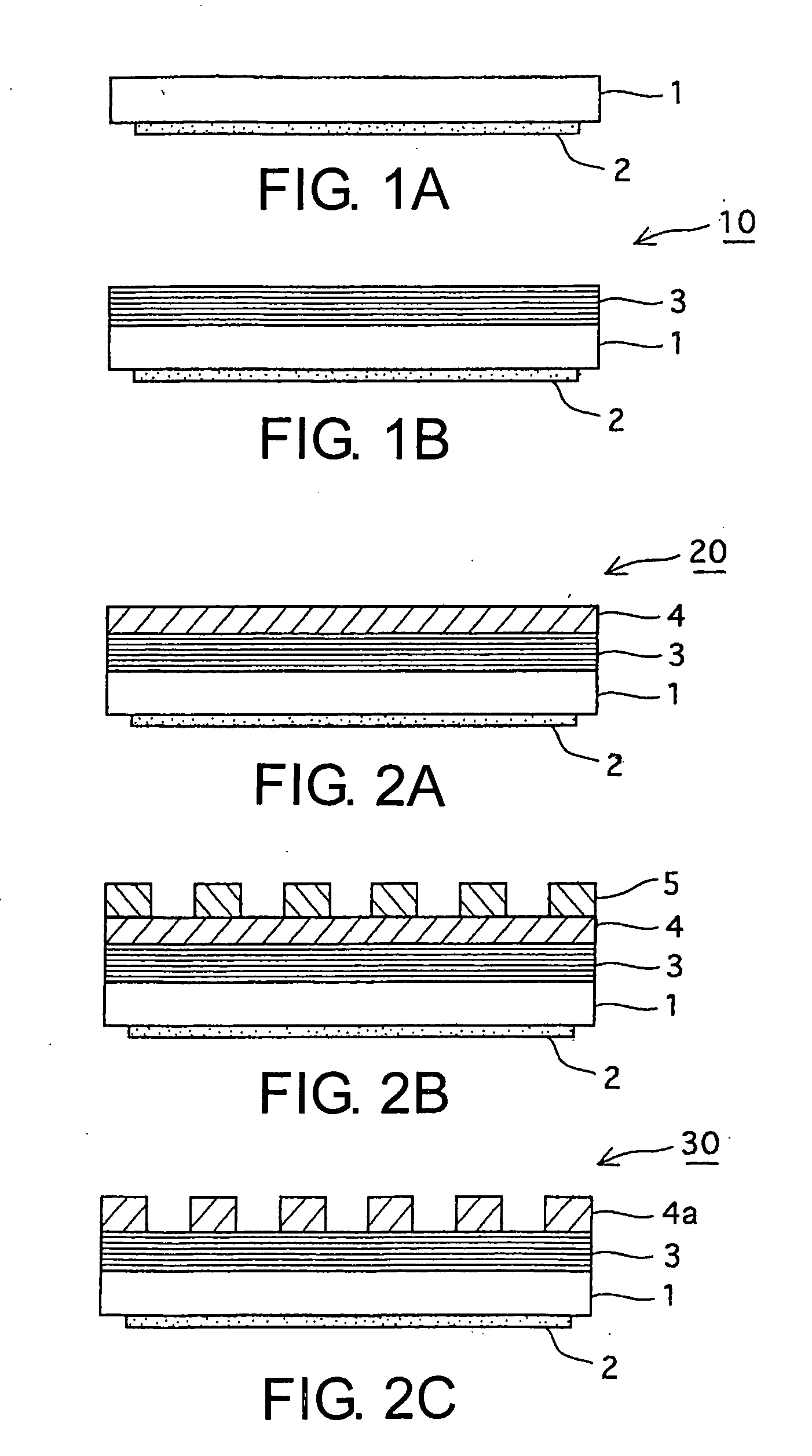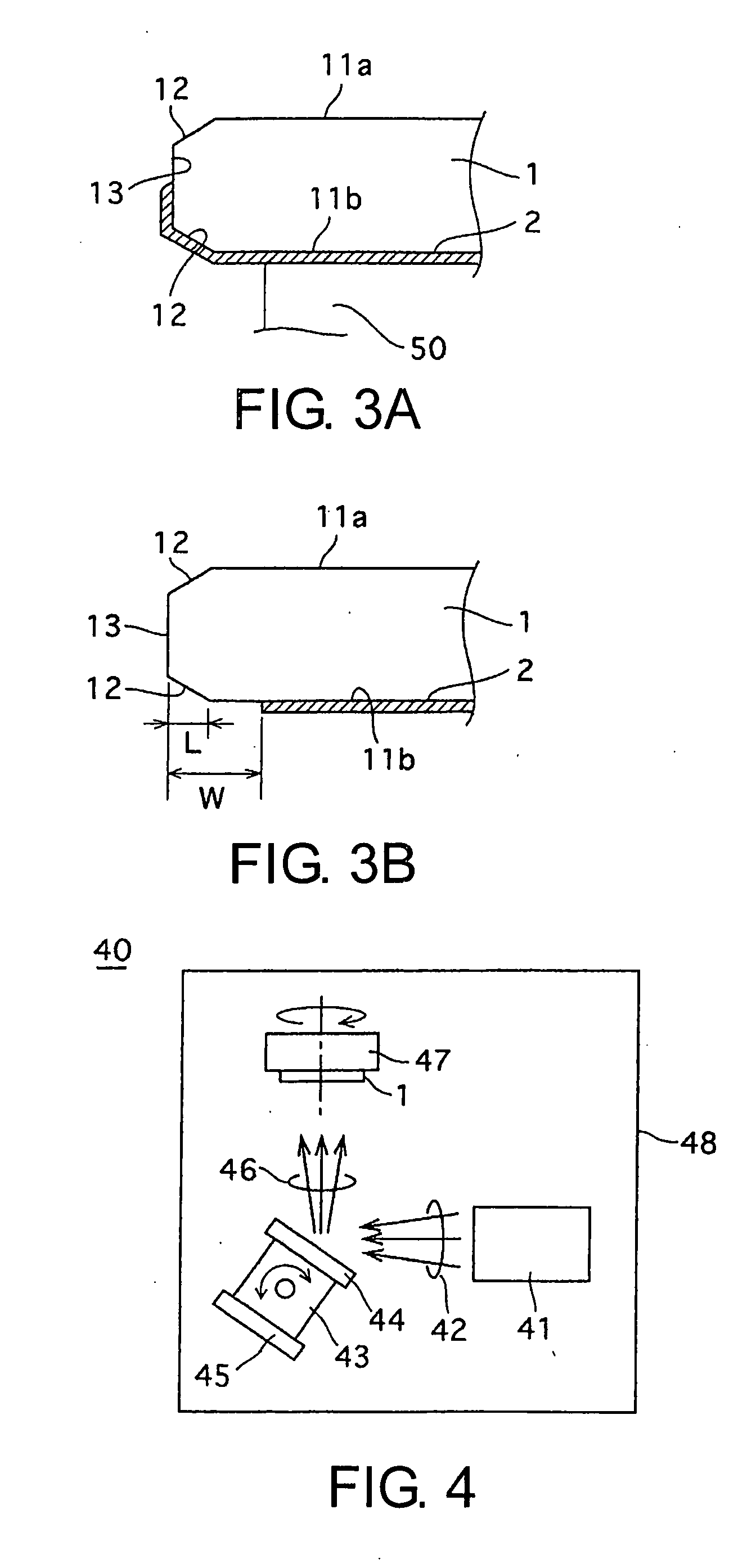Substrate with a multilayer reflection film, reflection type mask blank for exposure, reflection type mask for exposure and methods of manufacturing them
a multi-layer reflection film and substrate technology, applied in the field of multi-layer reflection film coating substrates, can solve the problems of film peeling, weak adhesion of cron film to glass substrates, and possible dielectric breakdown, so as to prevent particle occurrence and minimize surface defects
- Summary
- Abstract
- Description
- Claims
- Application Information
AI Technical Summary
Benefits of technology
Problems solved by technology
Method used
Image
Examples
example 1
[0113] As the substrate, an SiO2—TiO2 based glass substrate having an outer dimension of 6 inch square and a thickness of 6.3 mm was prepared. The glass substrate had a smooth surface of 0.12 nm Rms and a flatness of 100 nm or less by mechanical polishing.
[0114] Then, the glass substrate was placed at a predetermined position of the holder 60 having the structure shown in FIG. 5 through FIG. 7, and sputter deposition of the conductive film was performed by the use of an inline type sputtering apparatus. At first, by using a chromium target, reactive sputtering was carried out in a mixed gas atmosphere of argon (Ar) and nitrogen (N) (Ar: 72 volume %, N2: 28 volume %, pressure: 0.3 Pa) to form a CrN film having a thickness of 15 nm. Successively, by using a chromium target, reactive sputtering was carried out in a mixed gas atmosphere of argon and methane (Ar: 96.5 volume %, CH4: 3.5 volume %, pressure: 0.3 Pa) to form a CrC film having a thickness of 25 nm. Finally, by using a chrom...
example 2
[0123] In this example, the multilayer-reflection-film-coated substrate was produced in the manner similar to the example 1 except that the conductive film formed on the substrate had a double-layer structure of CrCN / CrON films. The deposition method of the CrON film was similar to that in the example 1. The deposition of the CrCN film was carried out by the use of the chromium target and by adjusting gas flow rates of methane and nitrogen in a mixed gas atmosphere of argon, methane, and nitrogen. The film thickness was 60 nm. In the obtained CrCN film, the carbon content was 8 at % and the nitrogen content was 12 at %. In the manner similar to the example 1, the conductive film was formed in an area 10 mm inside from the side surface of the substrate.
[0124] For the multilayer-reflection-film-coated substrate thus obtained in this example, the number of particles on the surface of the multilayer reflection film was measured. As a result, the number was 1.0 defects / cm2. Thus, genera...
example 3
[0127] In this example, the conductive film formed on the substrate was a lamination film having a three-layer structure of CrN / CrC / CrON similar to that of the example 1. The conductive film was formed throughout an entire area of one surface of the substrate, including one principal surface of the substrate as well as the chamfered surface and the side surface of the substrate. In the manner similar to example 1 except the above-mentioned respect, the multilayer-reflection-film-coated substrate was produced. For the multilayer-reflection-film-coated substrate thus obtained in this example, the number of particles on the surface of the multilayer reflection film was measured. As a result, the number was 10 defects / cm2. Thus, the number of the particles generated upon depositing the multilayer reflection film was small. In this example, the conductive film was formed also on the chamfered surface and the side surface of the substrate. However, since the conductive film comprising the...
PUM
| Property | Measurement | Unit |
|---|---|---|
| Electrical conductor | aaaaa | aaaaa |
| Reflection | aaaaa | aaaaa |
Abstract
Description
Claims
Application Information
 Login to View More
Login to View More - R&D
- Intellectual Property
- Life Sciences
- Materials
- Tech Scout
- Unparalleled Data Quality
- Higher Quality Content
- 60% Fewer Hallucinations
Browse by: Latest US Patents, China's latest patents, Technical Efficacy Thesaurus, Application Domain, Technology Topic, Popular Technical Reports.
© 2025 PatSnap. All rights reserved.Legal|Privacy policy|Modern Slavery Act Transparency Statement|Sitemap|About US| Contact US: help@patsnap.com



